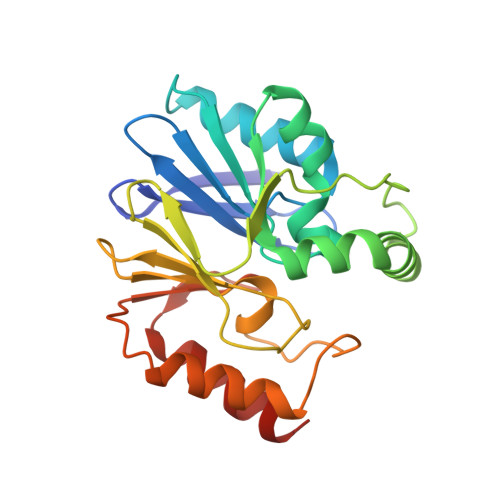A Metallo-beta-lactamase Enzyme in Action: Crystal Structures of the Monozinc Carbapenemase CphA and its Complex with Biapenem
Garau, G., Bebrone, C., Anne, C., Galleni, M., Frere, J.M., Dideberg, O.(2005) J Mol Biol 345: 785-795
- PubMed: 15588826
- DOI: https://doi.org/10.1016/j.jmb.2004.10.070
- Primary Citation of Related Structures:
1X8G, 1X8H, 1X8I - PubMed Abstract:
One strategy developed by bacteria to resist the action of beta-lactam antibiotics is the expression of metallo-beta-lactamases. CphA from Aeromonas hydrophila is a member of a clinically important subclass of metallo-beta-lactamases that have only one zinc ion in their active site and for which no structure is available. The crystal structures of wild-type CphA and its N220G mutant show the structural features of the active site of this enzyme, which is modeled specifically for carbapenem hydrolysis. The structure of CphA after reaction with a carbapenem substrate, biapenem, reveals that the enzyme traps a reaction intermediate in the active site. These three X-ray structures have allowed us to propose how the enzyme recognizes carbapenems and suggest a mechanistic pathway for hydrolysis of the beta-lactam. This will be relevant for the design of metallo-beta-lactamase inhibitors as well as of antibiotics that escape their hydrolytic activity.
Organizational Affiliation:
Institut de Biologie Structurale Jean-Pierre Ebel (CNRS-CEA-UJF), 41, rue Jules Horowitz, F-38027 Grenoble Cedex 1, France.

















